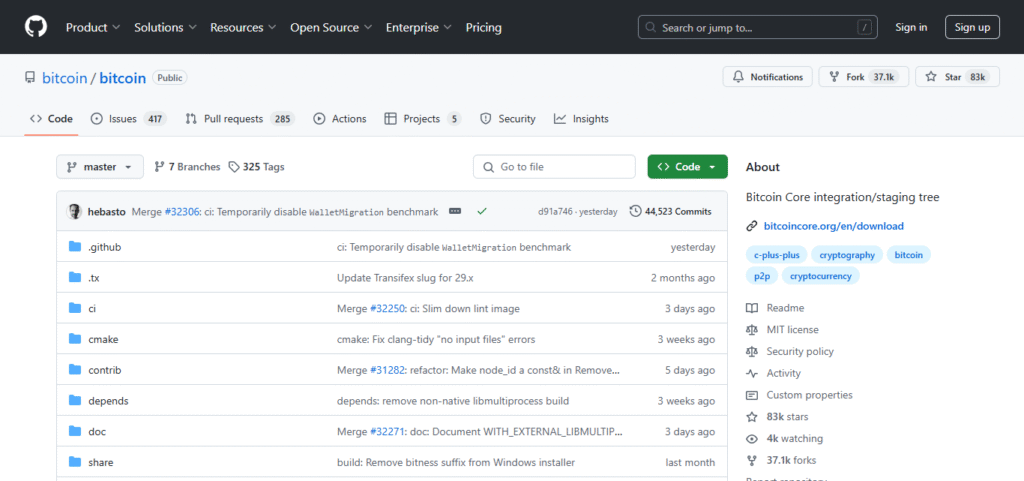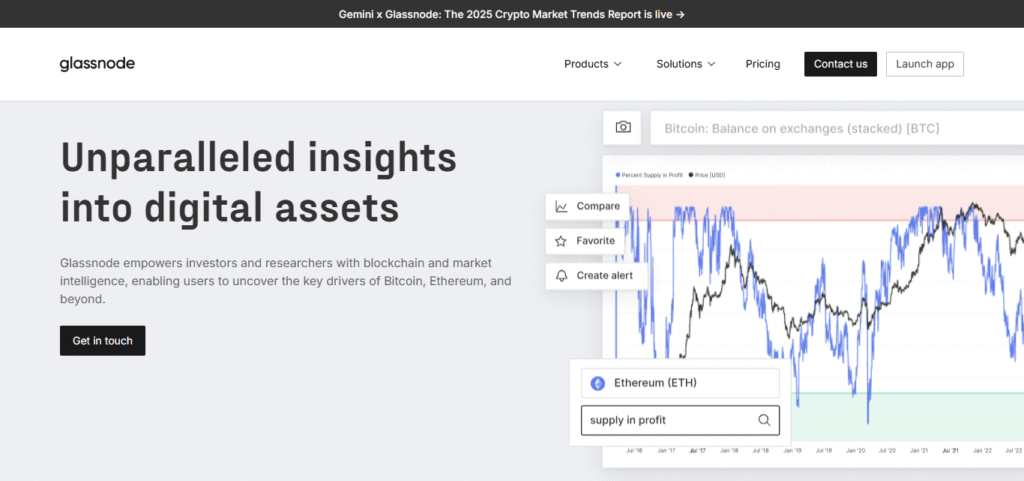In This article talks about tracking the activity of Bitcoin developers using on-chain analytics and tools such as GitHub, Glassnode, and Dune Analytics.
These tools provide great insight into development trends. Tracking commits, pull requests, and code changes aids developers and investors in analyzing the condition of the network so they can make informed decisions.
What is Bitcoin
Bitcoin is a cryptocurrency that first appeared in 2009, with its creator, Satoshi Nakamoto, remaining anonymous. This person operates the currency in a network that allows for payment processes without the use of a bank.
Bitcoin transactions are protected through blockchain technology, which stores all transfers on a ledger accessible to everyone.

This currency has a limit of 21 million coins therefore standing as a deflationary asset. The term “digital gold” refers to Bitcoin because its value can be stored just like gold.
Many people use Bitcoin for investments, to send money, and for protecting value from inflation and the standard finance system.
How To Track Bitcoin Developer Activity with On-Chain Analytics
GitHub is one of the most famous places to track the activity of Bitcoin Developers as it contains the source code and the development of Bitcoin.
GitHub insights is helpful in that it give data about the developers contributions such as commits, code reviews, and pull requests.
Get Access to the Bitcoin Repository

You can access your Bitcoin GitHub from (GitHub Bitcoin).
Review Commits
Go through the history to figure out how often the code is changed. Network metrics usually accompany certain fundamental network updates and other improvements.
Follow Pull Requests
Check what developers are doing with pull requests and what other features and fixes are being worked on.
Evaluate Contributors
The number of active contributors of a certain project is available in Github hence the lesser the number of contributors, the lower the community attention the project is receiving and diversity of developed is assessed.
Importance of Bitcoin Developer Activity
Upgrades to the Network: Developer activity is relevant to the evolution of Bitcoin which includes work on protocols, upgrades, and even security patches.
Additional Security: Ensuring that Bitcoin is secure from possible threats is made possible for active participants who detect vulnerabilities and patch them.
Innovative Features: Continuous development fosters the introduction of new features, improvements, and solutions for scalability making Bitcoin easier to use and more versatile.
Confidence of Community: Trust and a feeling of stability in Bitcoins long term sustenance is enhanced by the sheer amount of developers dedicated to it.
Effect on Markets: The market sentiment on Bitcoin is mostly influenced by the development activity, where innovation in progress indicates an increase in value in the future.
Tools for Tracking Bitcoin Developer Activity
Glassnode
Glassnode is a formidable blockchain data analytics platform that offers on-chain analytics tools. It analyzes and monitors a range of blockchain networks, such as Bitcoin, by observing network developer activities and other essential metrics.
Users with Glassnode can track developer contributions, commits, pull requests, and general network activities. These tools enable analysts and investors to monitor shifts in development focus, track trends, and gain further insight into a blockchain’s ecosystem.

With the help of Glassnode’s advanced analytics, users can monitor the state and growth of the network over time, thereby making it an essential Bitcoin resource.
Dune Analytics
Enables users to design their dashboards for Bitcoin blockchain data. Also provides statistics regarding developer activities such as code commits and forking of repositories.
Bitrefill’s Open Source Metrics
The Bitcoin developers along with their contributions which are available in open source projects can be tracked using Bitrefill’s Open Source Metrics.
It tracks activities like code commits, pull requests, issues solves, and many more, providing a detailed look into the ecosystem.

Through this, users assess the Bitcoin development community’s activity and growth, estimating its sustained future potential.
Blockchair
Provides blockchain data search and analysis services. Delivers analytics about the changes made to Bitcoin and its code by using commit information and data forking.
The Role of Developer Sentiment in Bitcoin’s Market
Calms Market Friction: A positive developer sentiment, demonstrated through innovation, boosts confidence which may increase demand and subsequently inflation of Bitcoin’s price.
Denotes Network Persistence: Active commitment by developers on security and scaling features maintenance puts investors on alert on the possibility of an enduring network.
Monitors Forks and Protocol Changes: Sentiment measures the internal strife developers have over forks or other major protocol changes, and this leads to market volatility as the investors respond to shifts in Bitcoin’s pathways.
Anticipates Development Shifts: The focus developers place on Bitcoin’s scalability, security and other new additions drives sentiment shift and so does investor anticipation who prefer buying stocks during such phenomena.
Utility driven Market Value Increase: Good sentiment leads programmers towards implementation of network upgrades such as SegWit or Taproot which will increase the use of Bitcoin and thus brings value increase.
Challenges and Limitations of Tracking Developer Activity
Data Accessibility: Not all activity related to developers is accessible. Private repositories, off-chain conversations, and proprietary code contributions are not easy to obtain, limiting the scope of analysis.
Off-Chain Contributions: The developers can participate in off-chain activities such as dealing with an issue on a forum, private chat, and attending some event which is difficult to track and quantify.
Limited Context: On-chain analytics tools capture different types of raw data such as commits, but more often than not these tools lack the context of why changes are made which makes it difficult to understand the meaning or importance of the activity.
Privacy Concerns: A developer may decide to use an alias which makes it difficult to track exact contributions and also makes it hard to determine who the key developers are within the community.
Data Overload: There is a huge number of commits and contributions and going through so much information becomes a challenge in which shifting through the data becomes difficult to focus on certain trends or notable changes.
activity is often misinterpreted: Increased activity from developers does not guarantee productivity, there’s a chance conflict between members is present and if things aren’t handled carefully, this might lead to forks or so many undesirable changes.
Conclusion
To sum up, It is evident that on-chain analytics enables sophisticated surveillance of the Bitcoin developer’s activities which provide great understanding of the network’s wellbeing and its future prospects.
All of these can be observed through tools like GitHub, Glassnode, and Dune Analytics where commits, pull requests, and code summaries are captured.
This information is critical to investors, developers, and even analysts who wish to keep up well with the trends on Bitcoin and gauge if there is likely growth opportunities or alternations in the Bitcoins ecosystem.










